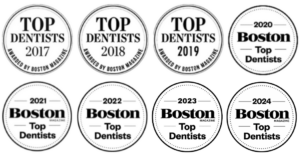Embracing Dental Home Care: Tips for Maintaining a Healthy Smile Between Dental Visits
A picture-perfect smile and excellent oral health are the cornerstones of self-confidence and overall well-being. While routine dental visits play a crucial role in maintaining a healthy and radiant smile, the foundation for optimal oral health begins at home. Established in 1991 by Dr. Fawn Rosenberg, Lexington Smile Studio has been committed to delivering exceptional dental care for the entire family, including comprehensive guidance on adopting effective dental home care practices.
Dental home care comprises daily habits and routines aimed at preserving your dental health and preventing oral conditions like tooth decay and gum disease. Adhering to a robust dental home care routine not only enhances your oral health but also ignites your inner confidence and ensures lasting, winning smiles.
In this insightful guide, we will unveil our expert recommendations for maintaining a healthy smile between dental visits, encompassing oral hygiene best practices, dietary tips, habits to avoid, and age-appropriate advice for children and adults alike. Our goal is to empower you with the knowledge and tools necessary to take charge of your dental health, transforming every aspect of your life with the confidence and radiance of a captivating smile.
Mastering Oral Hygiene: Brushing and Flossing Techniques
An effective dental home care routine starts with mastering the basics of oral hygiene – brushing and flossing. Establishing proper techniques and consistently adhering to them is essential for preventing plaque buildup, tooth decay, and gum disease.
- Brushing: Aim to brush your teeth at least twice a day using a soft-bristled toothbrush and fluoride toothpaste. Employ gentle circular motions at a 45-degree angle to the gum line, ensuring that all surfaces of the teeth are thoroughly cleaned. Don’t forget to also brush your tongue to eliminate bacteria and freshen your breath.
- Flossing: Floss at least once daily to remove lingering plaque and food particles from between your teeth and under the gum line. Use roughly 18 inches of floss, winding it around your middle fingers and using your thumb and index finger to gently slide it between your teeth, following the curve of each tooth to minimize gum irritation.
Nutrition and Diet: Eating for a Healthy Smile
The foods and beverages you consume play a significant role in determining your oral health. Adopting a nutritious diet not only benefits your overall well-being but also promotes strong teeth and healthy gums.
- Nutrient-rich foods: Prioritize calcium-rich foods like dairy products, leafy greens, and almonds for strong teeth, as well as vitamin C-packed fruits and vegetables for healthy gums.
- Limited sugar intake: Foods and beverages high in sugar contribute to plaque buildup and tooth decay. Minimize your consumption of candy, soda, and other sugary treats, and aim for healthier alternatives like fresh fruits, nuts, and water.
- Timing matters: Continuous snacking or sipping on sugary beverages throughout the day prolongs your teeth’s exposure to harmful acids. Keep snacking to a minimum and opt for well-balanced meals to reduce the likelihood of tooth decay.
Habits to Avoid: Protecting Your Teeth and Oral Health
Certain habits can compromise your dental health and undermine your dental home care efforts. Identifying and avoiding these practices can pave the way for a lifetime of healthy smiles.
- Smoking and tobacco use: Tobacco products not only increase the risk of gum disease and oral cancer but also lead to stained teeth and bad breath. Quit smoking or using tobacco to reap the rewards of improved oral health.
- Excessive alcohol consumption: Alcohol can erode tooth enamel and increase the risk of cavities. Limit your consumption and maintain a well-balanced diet for optimal oral health.
- Teeth grinding and clenching: Grinding or clenching your teeth can lead to enamel wear, jaw pain, and tooth breakage. If you’re struggling with this habit, consider a mouthguard or consult with our dental professionals at Lexington Smile Studio for other potential solutions.
Tailoring Dental Home Care: Age-Appropriate Tips for Children and Adults
Effective dental home care routines differ across various stages of life, and it’s crucial to adapt and refine your approach to ensure optimal oral health throughout your lifetime.
- Infants and toddlers: Begin cleaning your child’s gums with a soft, wet cloth, introducing a soft-bristled toothbrush as soon as their first tooth emerges. Schedule their first dental visit by their first birthday, and gradually teach them age-appropriate oral hygiene habits as they grow.
- School-aged children: Encourage regular brushing and flossing, using age-appropriate toothbrushes and fluoride toothpaste. Begin introducing mouthwash and discussing healthy food choices, laying the foundation for lifelong dental hygiene practices.
- Adults and seniors: Continue to prioritize daily brushing and flossing and consider additional steps like using an antibacterial mouthwash or an electric toothbrush to bolster your dental home care routine. Schedule regular dental exams and cleanings to address age-related dental concerns promptly.
Conclusion:
Embracing dental home care is the cornerstone of ensuring a radiant smile and optimal oral health. By mastering oral hygiene techniques, making mindful dietary choices, avoiding harmful habits, and tailoring your dental care routine to your specific needs, you can take control of your dental health and maintain a winning smile for a lifetime.
At Lexington Smile Studio, our passionate team of dental professionals is committed to providing comprehensive guidance and support for patients of all ages, empowering you with the knowledge and resources necessary for a confident, thriving smile. Together, let’s embrace the transformative power of dental home care and embark on a journey toward exceptional oral health and enduring happiness.



